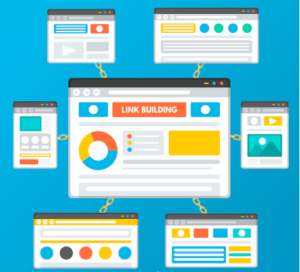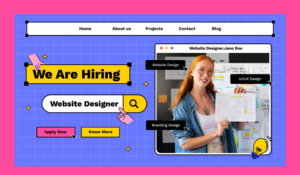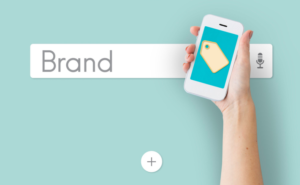Do you know that over 90% of the content published is never seen? Ever! That blog you spent your whole day writing or paid a copywriter to write, no one will read it. Creating content just because everyone says “content is king” is a waste of time if you aren’t doing it with the page type that is right for your content marketing goal. And whether your content marketing goal is to drive top-of-funnel traffic, turn first-time customers into repeat customers, convert site visitors on gated content, or promote a corporate partnership or contest, knowing which page type fits your marketing funnel can make all the difference.
I know that the growing number of page types on the web today, like microsites, pillar pages, content hubs, and landing pages, can make it hard for people to choose the right one. The good news is that there is a page type for every purpose. To figure out which one is right for you, you need to know the following:
- your short-term content marketing goal
- your long-term content marketing goal
- your use case
- your design
- page structure, and
- SEO consideration
Once you have established all or a few of the above, you are in a good position to choose a page type. But here are a few things to consider before making your choice:
Microsite: choose this when promoting a campaign or a new product
Microsites are the marketing equivalent of deep subject matter experts. A microsite might be appropriate for a large brand with a wide range of offerings looking to launch a differentiated product.
Yes, there are potential conversion opportunities on a microsite, but that is not its sole purpose. Microsites are in several ways like mini-websites. They contain informational resources relating to a brand that may not fit on the main company’s website. An established brand may simply like to deviate a little, and a microsite provides a low-risk environment for doing so without confusing customers and other visitors.
Another reason for keeping a microsite separate from the main site domain is that it may be associated with a short-term campaign. That way, when the campaign is over, it’s easier to close the page. Campaigns, giveaways, and sweepstakes are also common uses of microsites.
Pillar Page: Choose this when you want to showcase expert knowledge while driving SEO
Microsites can aid in the development of expertise in a specific field or subject. But unlike pillar pages, they are not always designed for long-term use. Assuming a content marketer is willing to wait a long time for an SEO result, a pillar page would be ideal. A pillar page is a tried-and-true component of an organic search strategy and is recommended if SEO is part of your goal.
While a landing page focuses on a specific topic, pillar pages cover a much broader range of topics. They often provide a comprehensive guide to an entire subject. A pillar page could very well explore the entire topic from top to bottom, linking to more granular content called clusters to delve deeper.
Take clothing for example. You can devote a pillar page to discuss clothing types such as fast fashion and sustainable fashion, clothing materials, and use cases such as fitness wear, dinner wear, or based on weather conditions and body type. The linking strategy is critical for pillar pages because they are not sitemaps or simply a list of links. There is no hard and fast rule for how much content should live on a pillar page before linking out to internal and external sources, but providing meaningful content on the page itself is critical.
A pillar page’s main goal, aside from helping with SEO, is to build trust. I really like pillar pages because you can give visitors a very clear entry point and create a set of different steps that can help them answer questions or solve problems.
Content Hub: choose this when attempting to serve customers and increase sales
A content hub is made to keep visitors on the same site, while pillar pages can link to other sites to help the reader. Its mission is to deliver the most useful content from a brand in the most user-friendly way possible.
A content hub can highlight a brand’s content by combining blogs with other types of content such as white papers, infographics, reports, and so on. However, it does not have to house all of a brand’s content. Instead, a brand may choose to create individual content hubs to highlight content centered on an industry, a business segment, or a common problem customers are attempting to solve. Shopify, for example, maintains a central hub to showcase all relevant merchant content and breaks it down by focus area.
Content hubs are less strict about how they should look than other types of pages, and they can help marketers reach a wide range of goals. From audience engagement to lead generation to a great user experience that builds consumer trust, content hubs are masters of brand and relationship building. Because nearly 80% of B2B buyers conduct product research before contacting sales, these content hubs serve as the brand’s public face. A well-designed hub can significantly improve your brand’s perception and make customers more likely to purchase your product or service.
The Shopify resource library, for example, exemplifies a strong content hub by presenting the brand’s best digital offerings in an easily sortable and customizable interface that fosters credibility and trust.
Landing Page: Choose this if you are attempting to increase lead conversion
Of all marketing content types, the traditional landing page has a more obvious purpose than the rest. These content-light pages are often short and concentrate on one goal. Unlike microsites that are the marketing equivalent of deep subject matter experts, landing pages are the marketing equivalent of a one-track mind
Within this context, the page directs users to a single call to action. Landing pages are typically linked to a paid media campaign. Sometimes, landing pages promote free downloads or trials, special offers, or any other type of campaign. People often do so by creating a display or social ads, or they allocate funds to a Google AdWords campaign, then direct the traffic to a campaign landing page that is designed to convert as many visitors as possible into leads via a short and simple form.
The landing page functions as the top of the marketing funnel, and its major function is to convert leads into sales.
A lot of marketers make the mistake of redirecting people to their home page or a product page instead of making a landing page for their campaign. Redirecting customers to a landing page makes the goal clear and the conversion path intentional. It has a better outcome than sending someone to a website page that may be an excellent next step but is not the best next step. Looking for a practical example? An example of a smart and straightforward SEM landing page is the BOLD subscription landing page, which is complete with customer logos, a clear value proposition, and a straightforward call to action.
Final Thoughts
If you want your content to get the visibility that it deserves, you need to get things right with your content marketing goal and figure out what page type is appropriate for your goal. Unfortunately, content marketers will keep creating new page types as they find new ways to use content marketing and demand generation in a world that is always changing. But it’s important to know what content marketing tools you already have if you want to meet the marketing goals of your brand at every stage of the funnel. And if you need help building a microsite, pillar page, content hub, or landing page, our support team is just a message away.






